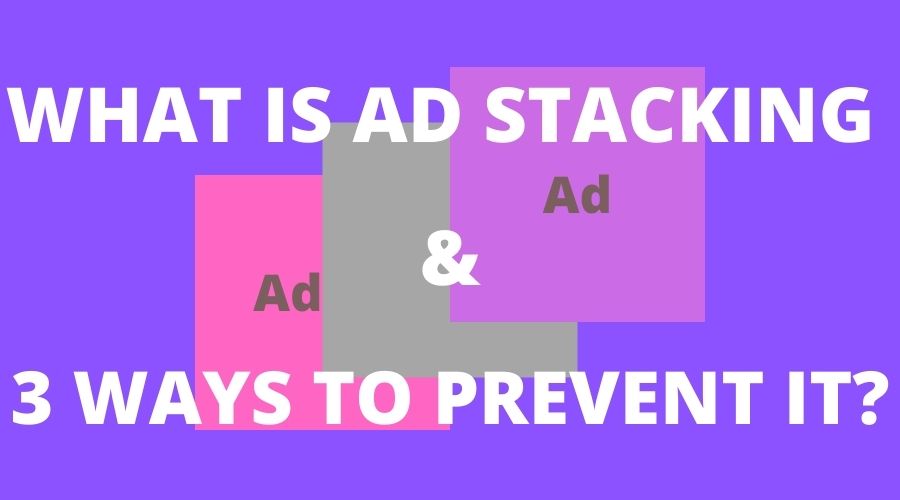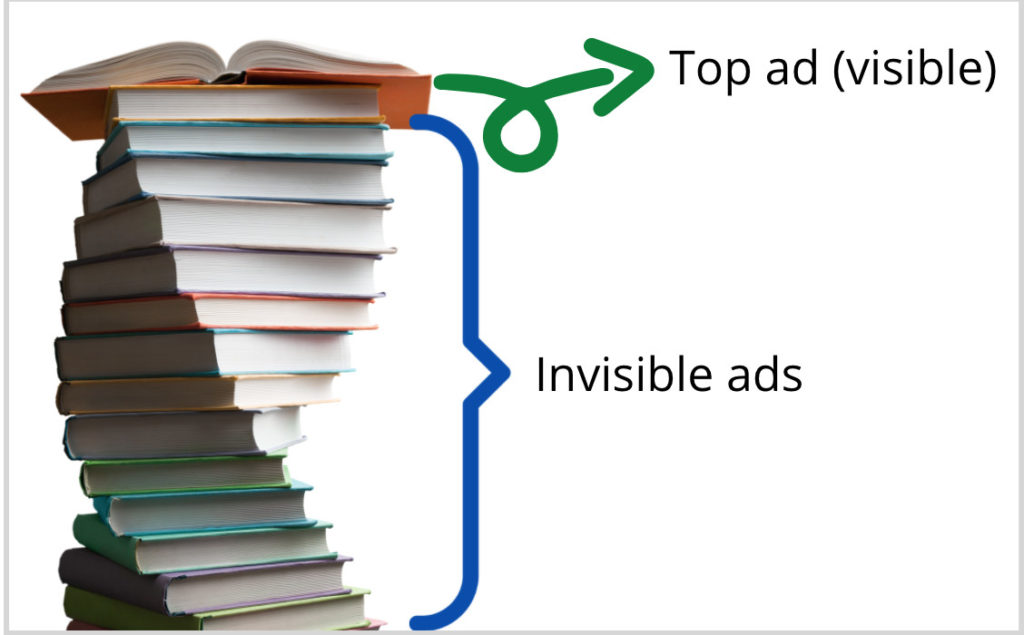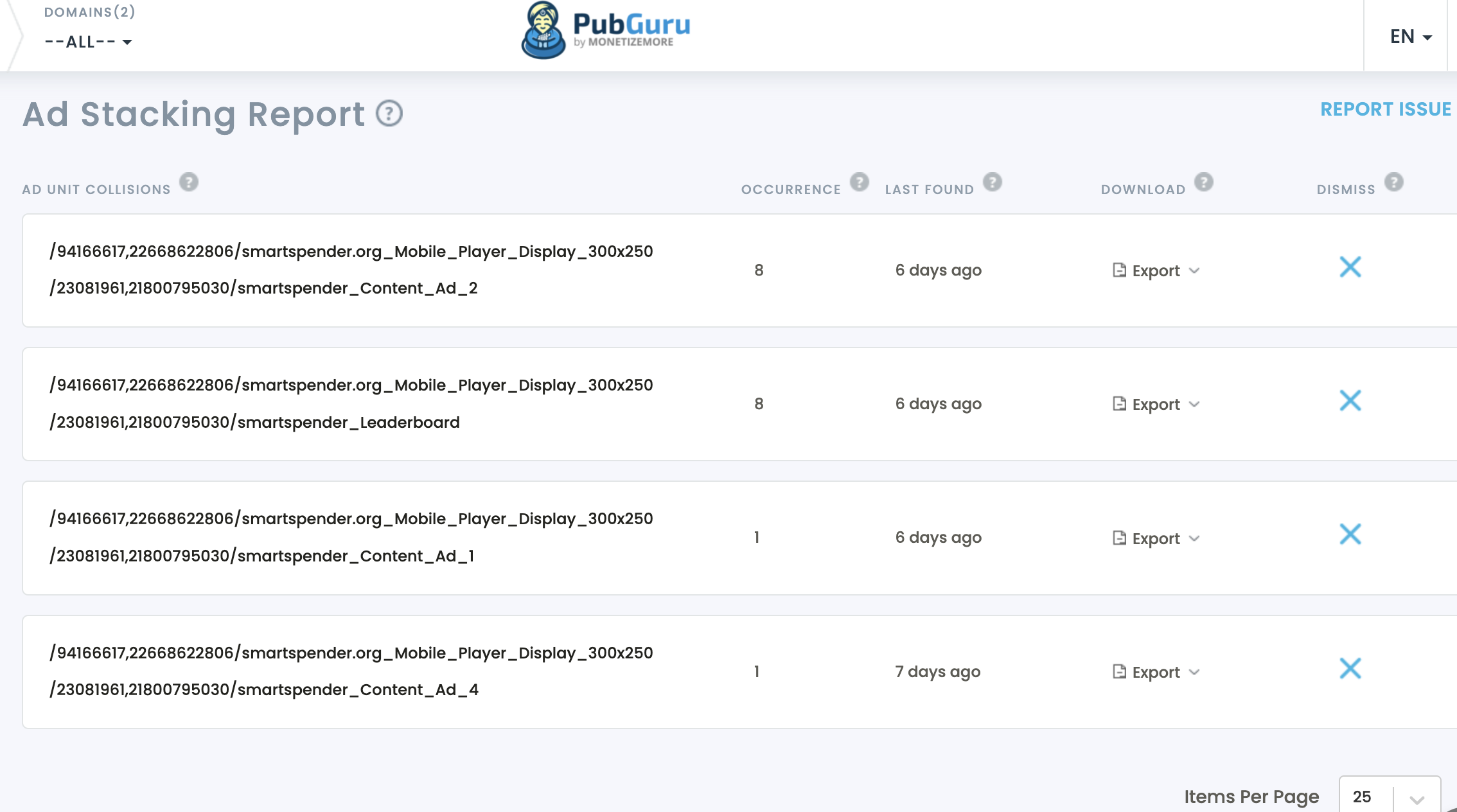
Ad stacking is the placing of ads on a page in such a way that they overlap, or stack, one another or other content. For a less reputable publisher, this has the advantage of getting payments for multiple ads within the same area of screen real estate, as all will get counted as an impression. For an advertiser, it means less value as some or all of their ad is not viewable by a user, and if anything is still viewable, it has less visual impact. Not surprisingly, ad stacking is a Google violation and can, in severe cases, lead to account suspensions or bans.
We refer to ad stacking as what we call vague invalid traffic. Rather than obvious invalid traffic, such as bot activity – think multiple clicks or views on a site in a regular pattern or too many in a short duration that couldn’t be human activity – invalid traffic is more difficult to identify. Understanding the intricacies of ad stacking and implementing effective strategies to prevent it is crucial for maintaining ad quality and ensuring fair revenue for publishers.

Ad stacking occurs when multiple ads are layered on top of one another in a single ad slot, but only the top ad is visible to the user. This unscrupulous tactic leads to multiple advertisers being charged for impressions despite only one ad being seen by the audience.
Imagine a single ad space where, under normal circumstances, one advertisement should appear. In the case of ad stacking, what occurs is a fraudulent manipulation: multiple advertisements are placed in this one slot. The catch? Only the top ad is viewable by website visitors. The rest of the ads are layered beneath the visible one, set to an opacity that makes them invisible while still registering impressions.
1- SEO Injections: Fraudulent scripts are programmed to stack ads into one ad unit, resulting in multiple non-viewable ads hidden from users but still triggering impression counts. This not only skews data but unjustly costs advertisers who believe they’re paying for legitimate ad views.
2- Placeholder Images: Another example of this deceptive practice involves using a static image that users can see in the shadows; a video advertisement runs silently, unseen, and accumulates ad impressions. This method utilizes the cover of a harmless-looking image to conduct unseen ad activities.
3- Fake banner tactics: Some nefarious scripts employ a rotating banner strategy, where the ad placement is a facade for continuous, invisible ad auctions. These auctions rotate ads through the banner, invisibly changing them after each has accrued enough screen time to qualify as an impression.
For publishers, these fraudulent activities not only tarnish credibility but also result in financial consequences. While these hidden ads achieve the pixel load necessary for counting as impressions, it’s the advertisers who are left footing the bill for these undelivered and unseen ad placements.
As a publisher, it’s paramount to understand and mitigate such practices to maintain trust with advertising partners.
Ad Stacking carries significant repercussions for publishers, advertisers, and users, each facing unique challenges due to these hidden layers of ads.
The most obvious consequence of ad stacking is a drop in revenue from advertisers and ad network clawbacks. If impressions are invalid, the money you earn from that impression will be returned to the advertiser and shown as a negative amount on your payout invoice. It’s painful to see impressions and revenue rise during the month and then have that revenue taken away at the end of the month – even several months after the impression was initially delivered.
The second and potentially more serious consequence is that repeated and consistent invalid traffic can lead to reduced bids from advertisers or ad networks or even a complete ban, a loss of an AdSense account, or an advertiser’s refusal to bid on your impressions entirely.
Finally, consistent invalid traffic, even at a low level, leads to a loss of your reputation amongst advertisers and networks, and this is impossible to quantify; imagine you were a shopkeeper in a small town and your produce was occasionally bad. You might not notice, and it might not be enough for anyone to complain, but trade might drift away.
It’s important to note that a lot of the time, ad stacking is unintentional. Most publishers that stack ads don’t realize they’ve done it. It can happen if the website code doesn’t render correctly on a certain viewport size or if a different ad size serves that conflicts with content. And it’s hard to spot with the naked eye.
Detecting ad stacking requires a multi-faceted approach, incorporating both technological solutions and vigilant monitoring.
The first way is manually. It is possible to use browser tools to check different viewport sizes – Mozilla and Chrome have developer tools that allow you to see how the site appears across different mobile, tablet, and desktop sizes. Schedule a time each month to check a selection of pages across all available sizes; look carefully at ad borders and make sure nothing looks out of place.
You can also monitor campaign stats. Ad stacking could exist if impressions are solid or higher than normal while clicks are low or falling simultaneously.
Regular Monitoring and Auditing:
The third way to end ad stacking is leveraging our award-winning IVT Solution Traffic Cop.
Traffic Cop utilizes machine learning algorithms trained to identify and report ad stacking patterns occurring on your site, providing an advanced layer of defense.


Recognizing the gap in the publishers marketplace for a robust solution that preemptively tackles ad stacking and other critical policy infringements, Traffic Cop stands out as the industry’s shield against these prevalent issues.
Traffic Cop is engineered with cutting-edge predictive technology to identify and neutralize the risk of ad stacking, aggressive ad refresh tactics, and serving unseen ads. This proactive approach sets Traffic Cop apart, as it doesn’t just detect violations post-occurrence—it anticipates and prevents them, protecting publishers before these actions can jeopardize their advertising income and website integrity.
Our award winning ad stacking solution also blocks bot traffic, even sophisticated bots that mimic human behavior, slashing your revenue clawbacks and helping to increase your site’s reputation amongst advertisers. The standard of impressions you can provide will unlock higher RPMs from the most premium sources.

With over ten years at the forefront of programmatic advertising, Aleesha Jacob is a renowned Ad-Tech expert, blending innovative strategies with cutting-edge technology. Her insights have reshaped programmatic advertising, leading to groundbreaking campaigns and 10X ROI increases for publishers and global brands. She believes in setting new standards in dynamic ad targeting and optimization.
10X your ad revenue with our award-winning solutions.